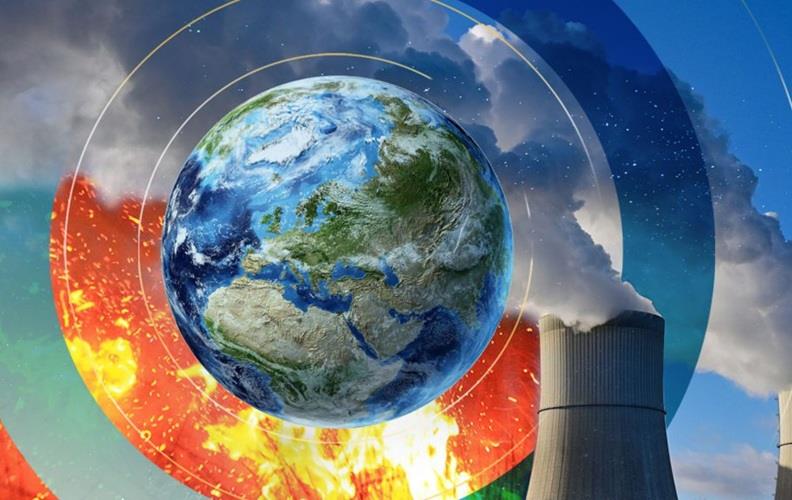
World hits 30% renewable electricity, record low carbon Iintensity
08/05/2024TN&MTAccording to the latest report from Ember, in 2023, strong growth in wind and solar energy drove the share of renewables in the global electricity mix above 30%, with total clean generation nearing 40%. As a result, the carbon intensity of the world’s electricity reached a new record low. However, clean sources were unable to meet all of the rise in demand. A record fall in hydropower exacerbated the shortfall, prompting an increase in fossil generation to bridge the gap. Consequently, total power sector emissions rose to a new record high.
Renewables hit 30% of global electricity
In 2023, robust growth in wind and solar energy propelled the share of renewables in the global electricity mix above 30% for the first time. This surge was significant, with 102 countries now boasting a renewable generation share of 30% or higher, up from 98 in 2022. Moreover, renewables accounted for over 50% of the energy mix in 69 countries, compared to 66 in the previous year. When combined with nuclear power, low-carbon sources now contribute to 39.4% of global electricity consumption.

Wind and solar energy continued their rapid expansion, reaching a new record high of 13.4% (3,935 TWh) in 2023. China emerged as a key player, responsible for 51% of the additional global solar generation and 60% of new global wind generation. Other significant contributors to global wind growth included the EU (24%) and Brazil (7%), while the EU (12%) and the US (11%) played pivotal roles in global solar growth.
Solar energy, in particular, demonstrated its dominance by outpacing coal in new electricity generation, marking its 19th consecutive year as the fastest-growing energy source. Despite their growth, wind and solar collectively fell slightly short of expectations, with their absolute growth slightly below the figures from 2022.

Global hydropower generation faced challenges, resulting in a five-year low of 4,210 TWh, despite new dam constructions. Droughts impacted hydro output in various regions, with notable decreases in Asia and North America.
Nuclear power maintained its contribution to global electricity at 9.1%, with a marginal increase of 46 TWh in 2023. However, this was a partial recovery from the previous year's decline, primarily driven by France and Japan.
Bioenergy electricity generation experienced a modest global increase, driven mainly by growth in China, while OECD countries saw a slight decline. Despite its potential, the use of bioenergy remains limited due to associated emissions and broader ecological concerns.
In 2023, global electricity demand surged by 627 TWh (+2.2%), hitting a new peak of 29,471 TWh, equivalent to adding Canada's entire electricity consumption. Leading this growth, China witnessed an increase of 606 TWh (+6.9%), closely followed by India with a 99 TWh uptick (+5.4%). However, OECD nations, including the US (-1.4%) and the EU (-3.4%), experienced declines due to milder weather and temporary reductions in industrial activity.
Carbon intensity dropped, but emissions hit a new high
2023 marked another significant milestone in reducing the CO2 intensity of global power generation, reaching a new record low of 480 gCO2/kWh, down 1.2% from 486 gCO2/kWh in 2022, as clean sources reached an all-time high.
However, absolute fossil fuel generation increased by 135 TWh (+0.8%) to meet the remaining demand growth not covered by clean sources, with slight upticks in both coal and gas. Consequently, global emissions rose by 1% (+135 million tonnes of CO2) in 2023, reaching 14,153 million tonnes of CO2 – a new record high.
2023 nearly became the first year of declining power sector emissions. With the continuous growth of clean electricity, there is growing confidence that in 2024, it will surpass electricity demand and lead to emission reduction.
Although global coal generation increased by 1.4% from 10,288 TWh in 2022 to 10,434 TWh in 2023, its share in the global electricity mix fell slightly from 35.7% to 35.4%. This minor decrease indicates progress in the global energy transition. Coal generation is declining rapidly in mature economies, while increasing mainly in four emerging economies affected by droughts in 2023.
Global gas generation saw a slight increase (+53 TWh, +0.8%), with its share in the mix falling to 22.5%. While the US experienced significant growth (+115 TWh, +6.8%), it was offset by declines in the EU, the UK, and Japan, where falling demand and rising clean power displaced both coal and gas. Gas generation has now fallen for four consecutive years in the EU.
The hydro deficit in 2023 significantly contributed to the increase in global fossil fuel generation. 95% of the rise in coal generation occurred in four countries severely affected by droughts, with above-average demand growth due to heatwaves and increased cooling needs. Coal generation increased notably in China (+319 TWh, +5.9%), India (+100 TWh, +7.3%), Viet Nam (+24 TWh, +23%), and Mexico (+12 TWh, +55%).
In China and India, lower hydro accounted for a significant portion of the rise in coal generation, while in Viet Nam, it contributed to most of the increase, leading to challenges in meeting rising demand. In mature economies, coal generation fell significantly, with the largest declines in the US, the EU, and Japan, attributed to demand reduction and increased clean power generation, primarily wind and solar in Europe and nuclear in Japan.
Ngoc Huyen (Ember)
















